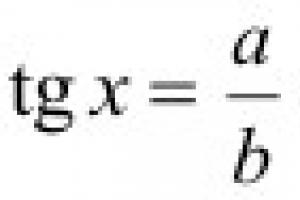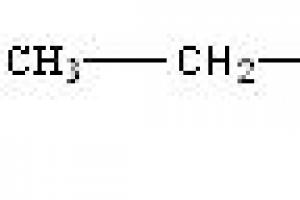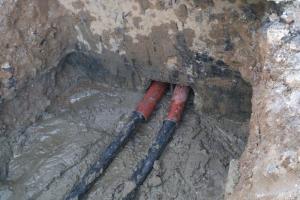An automatic switch (AS) is not at all like a regular switch, which is located in every room of your cozy home to turn the light on and off. His task is a little different. It is designed to protect electrical circuits from short circuits, voltage changes, overloads and other violations of circuit operating modes, as well as to manually disconnect and turn off lines and electricity consumers.
Based on their response time, automatic circuit breakers are divided into high-speed, normal and selector.
Nowadays, when technological progress does not stand still, AV has turned from a bulky, slightly inconvenient one into a compact (as possible) switching device.
Automatic machines (as this device is commonly called) are most often installed at the entrance to a house or apartment. And they try to place them in special boxes (shields), which can be either metal or plastic.
There are quite a few varieties of AB. Some of them serve only as circuit breakers and to protect the network from overload, while some have additional functions, such as protection against underload currents.
All AVs are divided into three types according to their response time to unacceptable voltage:
- selective;
- normal;
- fast-acting.
The response time of a normal machine ranges from 0.02 to 0.1 s. In selective ABs this is the same time. High-speed AVs work a little faster: for them this value is only 0.005 s.

All ABs are enclosed in a plastic unbreakable case with a special fastening on the back side. It is very easy to install the machine on this mount; just insert it onto the rail in the panel until it clicks. Removing the machine is just as easy - by pulling the special eyelet with a screwdriver. According to their technical design, AVs come in various types, from single-pole to four-pole, with various modifications.
Inside the machine there is the so-called filling, that is, its main safety devices - electromagnetic and thermal releases.
Basic requirements for AV
In all machines, the main contact system must:
- Ensure continuous operation at rated current without overheating or oxidizing.
- Without being damaged, disconnect the circuit at short-circuit currents.
AB device
Principle of operation

To protect against short circuits, the AV has an electromagnetic release. An electric current flows through the coil of an electromagnet. If the current exceeds the set value, the electromagnet attracts a contact, which activates the opening mechanism. High-speed releases react to higher current during a short circuit.
A thermal release is provided for overload protection. It is a bimetallic strip that heats up when current flows through it. If the current is too high, the plate overheats and becomes deformed, thereby breaking the electrical circuit. Releases of this type do not operate immediately, but with a delay. Short circuit current can destroy this device.
AB differences
Automatic machines are distinguished by the degree of sensitivity to tripping. In the most common standard models, AVs are most often used with a threshold value approximately equal to 140% of the nominal value.
ABs are also distinguished by the number of poles. What does it mean? One machine may have several electrical lines independent from each other, which are interconnected by a common shutdown mechanism. For example, two-pole or three-pole machines (as already mentioned above).
AB has differences in other equally important indicators. They differ in the threshold current strength that they pass through themselves. In order for the machine to operate and turn off the power supply in an emergency, it must be configured to a certain sensitivity threshold. This setting is usually made by the manufacturer, and therefore the numerical value of this threshold is immediately written on the machine.
For domestic needs, machines with ratings of 3, 6, 10, 13, 16, 20, 25, 32, 40, 50, 63, 80, 100, 125 and 160 A are used. These figures mean the total power of all electrical consumers that will be connect to the circuit. The sensitivity of the machine must be calculated not only by the total power of the expected energy consumers, but also by the wiring and electrical installation products - switches and sockets. Below is a table of machine types.

Ranges of instantaneous tripping currents of different types of machines
Here are a number of graphs that will be of interest to you (the letters B, C, D indicate the areas of instantaneous tripping currents).

Type B – over 3 Inom up to 5 Inom inclusive.
Type C – over 5 Inom up to 10 Inom inclusive.
Type D – over 10 Inom up to 20 Inom inclusive.
Some manufacturers have additional shutdown curves:
Type A – over 2 Inom to 3 Inom inclusive.
Type K – over 8 Inom to 14 Inom inclusive.
Type Z – over 2 Inom up to 4 Inom inclusive.
The rated current (I nom) refers to the current set by the manufacturer, which the machine is capable of carrying in continuous operation at a control temperature of 30°C.
AB type selection

When choosing a machine, it is assumed that its rated voltage should be higher than or equal to the rated mains voltage. The maximum strength of the short-circuit current in the protection zone is determined (using mathematical calculations), and the maximum permissible strength of the current AB is selected greater than this value.
The rated current of the release must be slightly greater than the value of the continuous maximum load current, otherwise the machine will turn off the circuit not only when the current is cut off from its set value, but also during normal operation (to put it simply, it will be triggered by your every sneeze ).
It is also necessary to ensure selectivity of the machine's action. It should turn off the protected object earlier than other circuit breakers located closer to the power source. Protection is considered selective if the response characteristics of the protection devices of the highest and lowest stages of the network, taking into account the zones of variation in characteristics, do not intersect. Below is a graph where the machines are located at the highest and lowest levels.
As you can see from the graph, in this case, an AV network with an increased adjustable response time (dashed curve) is used at the highest stage (number 1) or a current-limiting AV (dashed curve) is used at the lowest stage of the network.
Buying an AB
A few tips on how to purchase AB in a store wisely:
- Buy AB in specialized stores, not in markets (remember that stinginess is inappropriate here).
- Before buying, ask the seller to turn on the machine, and have him close the upper and lower contacts of the machine with probes from the tester. In this case, the tester must be turned on for a sound signal. If you hear a sound, it means the machine is working. This is necessary so as not to accidentally buy a defective machine.
- Pay special attention to ensure that there are no cracks or chips on the case.
- There should be a sign of Rostest on AB.
- There must be markings, and they must be located evenly, since in the factory the markings are applied by a machine.
- Many manufacturers are currently producing AVs with the ability to connect additional contacts and with the ability to connect phase combs from above.
- The rated voltage in volts must be indicated.
- The maximum breaking capacity in amperes must be specified.
- The selectivity class must be indicated.
- If you are purchasing German-made products or products made under a German license, pay attention to the signs that must be indicated on the AB. The article provides notations that you may encounter.
In conclusion, here are a number of useful tables.


From the very beginning of the emergence of electricity, engineers began to think about the safety of electrical networks and devices from current overloads. As a result, many different devices have been designed that are distinguished by reliable and high-quality protection. One of the latest developments is electric automatic machines.
This device is called automatic because it is equipped with a function to turn off the power in automatic mode in the event of short circuits or overloads. Conventional fuses must be replaced with new ones after tripping, and the circuit breakers can be turned on again after eliminating the causes of the accident.
Such a protective device is necessary in any electrical network circuit. A circuit breaker will protect a building or premises from various emergency situations:
- Fires.
- Electric shocks to a person.
- Electrical wiring faults.
Types and design features
It is necessary to know information about the existing types of circuit breakers in order to correctly select the appropriate device during purchase. There is a classification of electric machines according to several parameters.
Breaking capacity
This property determines the short circuit current at which the machine will open the circuit, thereby turning off the network and devices that were connected to the network. Based on this property, machines are divided into:
- 4500 ampere circuit breakers are used to prevent faults in the power lines of older residential buildings.
- At 6000 amperes, they are used to prevent accidents during short circuits in the network of houses in new buildings.
- At 10,000 amperes, used in industry to protect electrical installations. A current of this magnitude can occur in the immediate vicinity of a substation.
The circuit breaker trips when a short circuit occurs, accompanied by the occurrence of a certain amount of current.

The machine protects electrical wiring from damage to insulation by high current.
Number of poles
This property tells us about the largest number of wires that can be connected to the machine to provide protection. In the event of an accident, the voltage at these poles is switched off.
Features of machines with one pole
Such electrical circuit breakers are the simplest in design and serve to protect individual sections of the network. Two wires can be connected to such a circuit breaker: input and output.
The purpose of such devices is to protect electrical wiring from overloads and short circuits of wires. The neutral wire is connected to the neutral bus, bypassing the machine. Grounding is connected separately.

Electrical machines with one pole are not input, since when it is disconnected, the phase is broken, and the neutral wire still remains connected to the power supply. This does not provide 100% protection.
Properties of machines with two poles
In cases where an emergency requires complete disconnection from the electrical network, circuit breakers with two poles are used. They are used as introductory ones. In emergency situations or in the event of a short circuit, all electrical wiring is switched off at the same time. This makes it possible to carry out repair and maintenance work, as well as work on connecting equipment, since complete safety is guaranteed.
Two-pole electrical circuit breakers are used when it is necessary to have a separate switch for a device operating on a 220-volt network.

A machine with two poles is connected to the device using four wires. Of these, two come from the power supply, and the other two come from it.
Three-pole electrical circuit breakers
In an electrical network with three phases, 3-pole circuit breakers are used. The grounding is left unprotected, and the phase conductors are connected to the poles.

The three-pole circuit breaker serves as an input device for any three-phase load consumers. Most often, this version of the machine is used in industrial conditions to power electric motors.
You can connect 6 conductors to the machine, three of which are phases of the electrical network, and the other three coming from the machine and provided with protection.
Using a four-pole circuit breaker
To provide protection for a three-phase network with a four-wire system of conductors (for example, an electric motor connected in a star circuit), a 4-pole circuit breaker is used. It plays the role of an input device for a four-wire network.

It is possible to connect eight conductors to the device. On the one hand - three phases and zero, on the other hand - the output of three phases with zero.
Time-current characteristic
When devices consuming electricity and the electrical network are operating normally, current flows normally. This phenomenon also applies to electric machines. But, if the current increases for various reasons above the rated value, the circuit breaker is triggered and the circuit is broken.
The parameter of this operation is called the time-current characteristic of the electrical machine. It is a dependence of the operating time of the machine and the relationship between the actual current passing through the machine and the rated current value.
The importance of this characteristic lies in the fact that it ensures the smallest number of false alarms on the one hand, and current protection is provided on the other hand.
In the energy industry, there are situations where a short-term increase in current is not associated with an emergency, and the protection should not operate. The same thing happens with electric machines.
The time-current characteristics determine after what time the protection will operate and what current parameters will arise. The greater the overload, the faster the machine will operate.
Electric machines marked “B”
Automatic switches of category “B” are capable of switching off in 5 - 20 s. In this case, the current value ranges from 3 to 5 rated current values ≅0.02 s. Such machines are used to protect household devices, as well as all electrical wiring of apartments and houses.
Properties of machines marked “C”
Electrical circuit breakers of this category can turn off in 1 - 10 s, at 5 - 10 times the current load ≅0.02 s. These are used in many areas, most popular for houses, apartments and other premises.
The meaning of the marking "D" on automatic
Automatic machines with this class are used in industry and are made in the form of 3-pole and 4-pole versions. They are used to protect powerful electric motors and various three-phase devices. Their operation time is up to 10 seconds, while the operation current can exceed the rated value by 14 times. This makes it possible to use it with the necessary effect to protect various circuits.
Electric motors with significant power are most often connected through electrical machines with characteristic “D”, because starting current is high.
Rated current
There are 12 versions of the machines, which differ in the characteristics of the rated operating current, from 1 to 63 amperes. This parameter determines the speed at which the machine turns off when the current limit value is reached.

Based on this property, the machine is selected taking into account the cross-section of the wire cores and the permissible current.
Operating principle of electric machines
Normal mode
During normal operation of the machine, the control lever is cocked, current flows through the power wire at the top terminal. Next, the current flows to the fixed contact, through it to the moving contact and through a flexible wire to the solenoid coil. After it, the current flows through the wire to the bimetallic plate of the release. From it, the current passes to the lower terminal and further to the load.
Overload mode
This mode occurs when the rated current of the machine is exceeded. The bimetallic plate is heated by a high current, bends and opens the circuit. The action of the plate requires time, which depends on the value of the passing current.
The circuit breaker is an analog device. There are certain difficulties in setting it up. The tripping current of the release is adjusted at the factory using a special adjusting screw. After the plate has cooled, the machine can function again. The temperature of the bimetallic strip depends on the environment.
The release does not act immediately, allowing the current to return to its nominal value. If the current does not decrease, the release trips. Overload can occur due to powerful devices on the line, or the connection of several devices at once.
Short circuit mode
In this mode, the current increases very quickly. The magnetic field in the solenoid coil moves the core that activates the release and disconnects the power supply contacts, thereby removing the emergency load of the circuit and protecting the network from possible fire and destruction.
An electromagnetic release acts instantly, which is different from a thermal release. When the contacts of the operating circuit open, an electric arc appears, the magnitude of which depends on the current in the circuit. It causes destruction of contacts. To prevent this negative effect, an arc chute is made, which consists of parallel plates. In it, the arc fades and disappears. The resulting gases are discharged into a special hole.
How does a circuit breaker work?
Automatic switches (switches, circuit breakers) are electrical switching devices designed to conduct circuit current in normal modes and to automatically protect electrical networks and equipment from emergency modes (short circuit currents, overload currents, reduction or disappearance of voltage, changes in current direction, occurrence of magnetic fields of powerful generators in emergency conditions, etc.), as well as for infrequent switching of rated currents (6-30 times a day).
Due to their simplicity, convenience, safety of maintenance and reliability of protection against short circuit currents, these devices are widely used in electrical installations of low and high power.
Automatic switches are classified as manually operated switching devices, but many types have an electromagnetic or electric motor drive, which makes it possible to control them from a distance.
Automatic machines are usually turned off manually (by a drive or remotely), and in case of violation of the normal operating mode (the appearance of overcurrents or a decrease in voltage) - automatically. Moreover, each machine is equipped with a maximum voltage release, and in some types, a minimum voltage release.
According to the protection functions they perform, circuit breakers are divided into circuit breakers: overcurrent, undervoltage and reverse power.
Overcurrent circuit breakers are used to automatically open an electrical circuit when short circuit currents and overloads occur in it in excess of the established limit. Replacing a switch and a fuse, they provide more reliable and selective protection in abnormal conditions.
If environmental conditions are different from normal (air humidity is above 85% and it contains impurities of harmful vapors), then circuit breakers should be placed in dust-moisture-proof and chemical-resistant boxes and cabinets.
Classification
Automatic switches are divided into:
- installation circuit breakers have a protective insulating (plastic) casing and can be installed in publicly accessible places;
- universal - do not have such a housing and are intended for installation in switchgears;
- fast-acting(own response time does not exceed 5 ms);
- slow-acting(from 10 to 100 ms);
The speed of operation is ensured by the operating principle itself (polarized electromagnetic or induction-dynamic principles, etc.), as well as by the conditions for rapid extinguishing of the electric arc. A similar principle is used in current-limiting circuit breakers;
- selective , having an adjustable response time in the zone of short circuit currents;
- reverse current circuit breakers, triggered only when the direction of current in the protected circuit changes;
- Polarized machines turn off the circuit only when the current increases in the forward direction, non-polarized - in any direction of the current.

The design features and operating principle of the machine are determined by its purpose and scope of application.
The machine can be turned on and off manually, by an electric motor or an electromagnetic drive.
The manual drive is used at rated currents up to 1000 A and provides a guaranteed maximum switching capacity regardless of the speed of movement of the switching handle (the operator must carry out the switching operation decisively: having started, carry it to the end).
Electromagnetic and electric motor drives are powered by voltage sources. The drive control circuit must have protection against re-switching on to a short-circuit, and the process of switching on the machine to the maximum short-circuit currents must stop at a supply voltage of 85 - 110% of the rated one.
In case of overloads and short circuit currents, the circuit breaker is switched off regardless of whether the control handle is held in the on position.
An important component of the machine is the release, which controls the specified parameter of the protected circuit and acts on the tripping device that turns off the machine. In addition, the release allows remote shutdown of the machine. The most widely used types of releases are:
- electromagnetic for protection against short circuit currents;
- thermal for overload protection;
- combined;
- semiconductor, with great stability of response parameters and ease of configuration.

For switching a circuit without current or for rare switching of the rated current, automatic circuit breakers without releases can be used.
The series of circuit breakers produced by the industry are designed for use in different climatic zones, placement in places with different operating conditions, for operation in conditions of different mechanical stress and explosiveness of the environment, and have different .
Information about specific types of devices, their types and sizes is given in the regulatory and technical documents. Typically, such a document is Technical conditions (TU) of the plant. In some cases, for the purpose of unification, for products that are widely used and produced by several enterprises, the level of the document is increased (sometimes to the level of the State standard).
Circuit breakers consist of the following main components:
- contact system;
- arc extinguishing system;
- releases;
- control mechanism;
- free release mechanism.
Contact systemconsists of fixed contacts fixed in the housing and movable contacts hinged on the axle axis of the control mechanism lever, and usually provides a single circuit break.
Arcing deviceis installed in each pole of the switch and is intended to localize the electric arc in a limited volume. It is an arc-extinguishing chamber with a deion grid made of steel plates. Spark arrestors in the form of fiber plates may also be provided.
Free release mechanismis a hinged 3- or 4-bar mechanism that provides disengagement and disconnection of the contact system for both automatic and manual control.
Electromagnetic overcurrent release, which is an electromagnet with an armature, ensures automatic tripping of the circuit breaker at short-circuit currents exceeding the current setting. Electromagnetic current releases with a hydraulic delay device have an inverse current time delay to protect against overload currents.
Thermal overload releaseis a thermobimetallic plate. During overload currents, the deformation and forces of this plate ensure automatic tripping of the circuit breaker. The time delay decreases as the current increases.
Semiconductor releasesconsist of a measuring element, a block of semiconductor relays and an output electromagnet that acts on the free release mechanism of the machine. A current transformer (AC) or a choke magnetic amplifier (DC) is used as a measuring element.
The semiconductor current release allows the following parameters to be adjusted:
- rated current of the release;
- operating current settings in the zone of short circuit currents (cut-off current);
- settings for response time in the overload current zone;
- settings for response time in the zone of short circuit currents (for selective switches).
Many machines use combined releases that use thermal elements to protect against overload currents and electromagnetic elements to protect against short-circuit currents without a time delay (cutoff).
The switch also has additional assembly units that are built into the switch or attached to it externally. They can be independent, zero and minimum releases, free and auxiliary contacts, manual and electromagnetic remote drives, automatic shutdown signaling, a device for locking the circuit breaker in the “off” position.
The independent release is an electromagnet powered by an external voltage source. Minimum and zero releases can be made with or without time delay. Using an independent or minimum release, it is possible to remotely turn off the machine.
terms of Use
Automatic switches are available in versions with varying degrees of protection from touches and external influences (IPOO, IP20, IP30, IP54). In this case, the degree of protection of the terminals for connecting external conductors may be lower than the degree of protection of the switch shell.
Switches are manufactured in 5 climatic versions and 5 placement categories, which are coded by the letters U, UHL, T, M, OM and numbers 1,2,3,4,5.
The switches are designed for continuous operation under the following conditions:
- installation at an altitude of no more than 1000 m above sea level (AP50 and AE1000 series switches - at an altitude of no more than 2000 m above sea level);
- ambient air temperature from - 40 (without dew and frost) to +40°C (for AE1000 series switches - from +5 to +40°C);
- relative ambient humidity no more than 90% at 20°C and no more than 50% at 40°C;
- environment - non-explosive, not containing dust (including conductive dust) in quantities that disrupt the operation of the switch, and aggressive gases and vapors in concentrations that destroy metals and insulation;
- the installation location of the switch is protected from water, oil, emulsion, etc.;
- lack of direct exposure to solar and radioactive radiation;
- absence of sharp shocks (impacts) and strong shaking; Vibration of the mounting points of switches is allowed with a frequency of up to 100 Hz with an acceleration of no more than 0.7 g.
Groups of operating conditions for electrical products regarding the impact of mechanical environmental factors are defined by GOST 17516.1-90. In accordance with the catalog data, circuit breakers are intended for operation in groups Ml, M2, MZ, M4, Mb, M9, M19, M25.
In terms of safety, the circuit breakers comply with GOST 12.2.007.0-75 and GOST 12.2.007.6-75, the requirements of the “Rules for Electrical Installations” and provide the operating conditions established by the “Rules for the Technical Operation of Installations by the Consumer” and “Safety Rules for the Operation of Electrical Installations by the Consumer” approved by Gosenergonadzor on December 21, 1994. In terms of protection against leakage currents, the switches comply with the requirements of GOST 12.1.038-82.
Operation in a non-working state (storage and transportation during breaks in work) complies with GOST 15543-70 and GOST 15150-69.
Circuit breakers protect power lines (simply wires) from overloads caused by connecting a large number of loads to them (for example, household appliances). These overloads significantly reduce the service life of the lines, can damage the lines and can cause a fire. There is a widespread misconception that a circuit breaker serves to protect household appliances from network overloads (and very often it is not specified which overloads). This misconception gives rise to a lot of errors when choosing the rating of a circuit breaker. Often, when replacing or installing a circuit breaker, its rating is chosen at random on the principle of “more powerful and cheaper.” In fact, the circuit breaker protects not the devices, but the power lines from current overloads, so the calculation of the circuit breaker protecting the line should be based on the parameters of the line (that is, initially, on the characteristics of the cable). For example, we can cite a case where a line made from an old aluminum cable with a cross-section of 1.5 mm. A machine with a nominal value of 40A was installed. Thermal overloads on this line led to the fact that the service life of this cable, instead of 20 years, was reduced to 2 months, after which a complete replacement of the cable was required. It is absolutely clear that replacing a cable is disproportionately more expensive than choosing the right machine. protection.
2) Automatic switches. Purpose.
Circuit breakers usually called simply "automatic machines". They are designed to protect electrical networks from overload and short circuits. In the past, the functions of automatic machines were performed by plugs into which fuses were inserted. The main advantage of the machines is that to turn them on again, you only need to lift the lever, i.e. no need to change the fuse, as in traffic jams.
Main characteristics of the machines - rated current And trigger class.
Both of these characteristics are always indicated on the machine body, for example: C16, B6, D32.
- The rated current characterizes the value of the current that the machine is capable of passing (measured in amperes).
If this value is exceeded, the machine is triggered and opens the circuit. The machines are produced with the following standard rated current values: 6, 10, 13, 16, 20, 25, 32, 40, 50, 63, 80, 100A.
- The tripping class characterizes the short-term current value at which the machine will NOT trip.
There are trip classes “B”, “C” and “D”.
Class “B” circuit breakers are used in networks without large voltage surges (in the range from 3 to 5 rated current values).
Class “C” machines are most often used in apartments, offices and cottages. They are designed for currents 5-10 times higher than the rated current.
Type “D” is used in networks where currents from 10 to 50 times the rated current are allowed.
At home, off-phase (single-pole) circuit breakers are usually used. They serve to open the phase conductor. Less commonly used are two-phase (two-pole) circuit breakers and "phase + neutral" circuit breakers. They simultaneously open the phase (L) and neutral (N) wires.
Three-phase (three-pole) and four-phase (four-pole) are used, as a rule, in industrial installations with a voltage of 380 Volts.
As a rule, the number of modules occupied by a machine on a din rail corresponds to the number of phases.
3) How to choose a circuit breaker?
At home, it is recommended to install an input machine and a separate machine for each line (for example, in the kitchen, bathrooms, rooms, etc.). As already written above, for the home it is recommended to use machines with operation class “C”.
When choosing the rated current, you should take into account the quality of the wiring and the total power of the electrical appliances that you plan to connect. In this case, the rated current of the machine must necessarily be less than the maximum current that the wire can withstand. So, for example, for a copper wire with a cross-section of 2.5 kV. mm it is recommended to connect a circuit breaker no more than 20A, and for 4kV. mm - 32A.
4) Dangerous mistakes.
More than 20 years ago, aluminum wiring with a cross-section of 1.5 sq. mm was often used. For such wiring, circuit breakers of no more than 6A are needed.
Today, when we use washing machines and dishwashers along with electric kettles, such machines can often work. A serious mistake in this case is to use circuit breakers with a higher current rating (for example, 16A), since they will not turn off and it may seem that the problem is solved.
But in fact, when using such a machine with such wiring, the danger of a short fire increases sharply due to too high a load on the wiring. A large proportion of household fires occur due to improper use of circuit breakers.
It must be remembered that the machine does not protect a person from electric shock.
Automatic switches (automatic circuit breakers) are designed for quickly turning on and off low-voltage electrical circuits and protecting them from short-circuit currents and overloads, as well as from disappearance or reduction of network voltage.
The role of protective elements that react to the deviation of one or another controlled value from its normal value is performed by releases. The following releases can be installed in the machines:
maximum current, triggered instantly when there is a short-circuit current in the circuit;
minimum voltage, triggered in case of voltage drop or disappearance;
reverse current, which are triggered when the direction of current in a DC circuit changes;
independent (not dependent on any parameters of the electrical circuit), which serve to remotely turn off the machines;
thermal, used for protection against overloads (similar to thermal relays of starters);
combined, including electromagnetic and thermal releases simultaneously.
Automatic circuit breakers are equipped with a free trip mechanism (MTM), which allows the circuit breaker to be turned off during or after switching on.
In Fig. The design of a circuit breaker with arc extinguishing 1 and main 2 contacts is shown schematically. The main contacts, made of copper, have low contact resistance and can carry high current for a long time. Arcing contacts, made of metal-ceramic, are connected in parallel with the main ones.
The machine is switched on manually by turning the handle 7 clockwise around axis 03 or remotely by electromagnetic drive 8. In this case, the levers 5 of the free release mechanism move the contact lever 3 to the right, overcoming the force of the trip spring 4. By turning the lever 3 around the axis O, Arc-extinguishing contacts 7 close, compressing their shock-absorbing spring, then the main 2: The switched-on machine snaps into place when the articulated joint Og moves down.
Basic design of a circuit breaker
The machine is turned off manually by turning the handle counterclockwise or automatically and remotely when current flows through the winding of the tripping electromagnet of release 6. Its core moves the hinge Og upward and the rigid system of levers 5 “breaks” along the hinge. The opening spring 4 opens the switch. The arc arising between contacts 1 is extinguished in the arc extinguishing chamber by dividing it into a number of arcs by metal plates 9.
A threaded machine with a combined release is shown in Fig. 2. The machine is turned on manually by pressing button 1, and turned off by pressing button 2. When the machine is turned on, current flows from the central contact 10 through the fixed contacts 6 and 11, connected by a contact bridge 5, a bimetallic plate 13, a flexible connection 14, a winding of the electromagnetic release 15 to the threaded sleeve 7.
In the event of a short circuit, the electromagnet core 16 is pulled down, the latch lever 3 rotates around axis O, releasing lever 4. The movable switch system moves upward under the action of the compressed spring 9, and the pusher 8 opens the contacts.
During prolonged overload, the bimetallic plate 12 heats up and bends, the latch pin 13 moves to the left, releasing lever 4, and the machine turns off.
The appearance of the circuit breaker is shown in Fig. 2, a. It is assembled in a plastic case, has a metal base with a thread, with which it is screwed into the threaded sleeve of the base of the plug fuse. 
Rice. 2. Threaded circuit breaker: a - appearance; b - principle of the device
Automatic switches are widely used, in which manual control is carried out using Handle 8 (Fig. 3). The switch consists of an electromagnetic overcurrent release 1, housing 2, contacts 3, output terminals 4, arc chute 5, free release mechanism, cover 7 , thermal relay regulator 9. Control handle 8 is also an indicator of the switch position: upper position - the switch is on, lower - off. 
Rice. 3. Circuit breaker with control handle
Thus, circuit breakers are both switching and protective devices for low-voltage electrical circuits.








